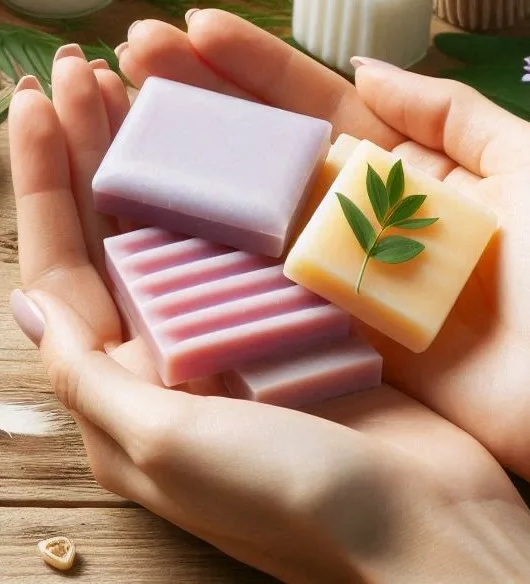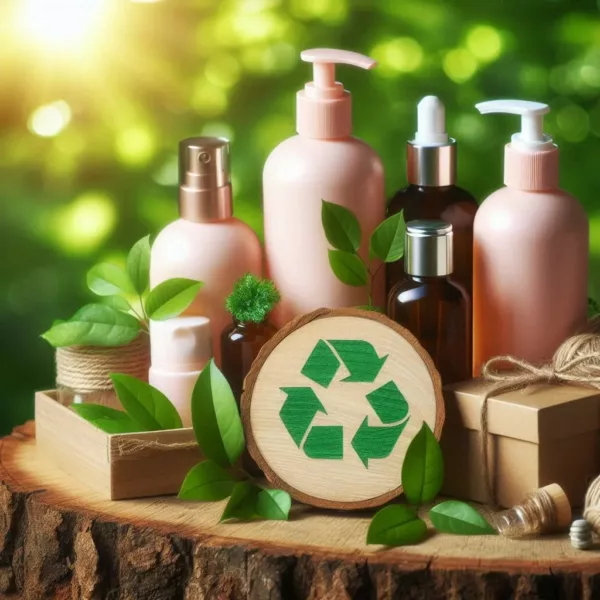Eco-friendly packaging isn’t just a buzzword thrown around by companies these days. It represents a commitment to minimizing negative environmental impacts while ensuring the products we use daily are packaged safely and attractively. Environmentally friendly anti-aging packaging means one or more components are easily reusable, biodegradable, or recyclable. And no, it doesn’t mean the products inside are any less effective.
Think about all those jars, bottles, and tubes we use daily that end up in landfills. Eco-friendly packaging aims to change this narrative by offering alternatives that break down naturally or can be repurposed seamlessly. The goal here is simple: keep our planet green while maintaining the integrity and appeal of the product.
The beauty industry is catching onto this wave massively. Whether it’s skincare giants switching to sustainable packaging or new brands building their philosophy around it, the shift toward eco-friendly solutions is undeniable. The motivation? Beyond the obvious environmental concerns, it’s also the consumers who are increasingly demanding more sustainable choices.
People today want to know their serums and creams don’t contribute to the growing waste crisis. In response, companies are rolling out innovative packaging solutions that are as kind to the earth as they are chic on your bathroom shelf. It’s a win-win for both the planet and those fine lines you’re trying to smooth out!
Exploring the Most Environmentally Friendly Packaging Materials
When searching for the most environmentally friendly packaging materials, it’s pretty eye-opening to see how creative manufacturers and designers can get. Whether it’s ditching plastic in favor of recycled paper or opting for glass containers, there are choices aplenty that help minimize environmental impact without compromising on functionality.
Take biodegradable materials, for instance. These beauties can decompose naturally, reducing waste significantly. Packaging made from plant-based plastics, cornstarch, or even seaweed falls under this category. It’s like Mother Nature getting a helping hand to clean up after us.
Recycled materials like paper and cardboard are also super popular for their ability to be reused multiple times, lessening the demand for new resources. Companies often choose these to ensure their packaging not only serves a practical purpose but also tells an eco-friendly story.
Glass and bamboo are champs when it comes to anti-aging products that need to stay fresh and effective. Bamboo, being renewable and strong, is great for holding solid skincare products, while glass is perfect for creams and serums that require a stable environment to maintain their efficacy.
Comparing these materials, each comes with pros and cons, so it’s about weighing what matters more to you – whether it’s the aesthetics, sustainability, or durability. The key takeaway? Making informed choices that blend both your skincare needs and environmental values.
Sourcing the Best Eco-Friendly Packaging for Anti-Aging Products
Picking the best eco-friendly packaging isn’t just about slapping on a green label. Finding that perfect balance between sustainable practices and maintaining the quality of anti-aging skincare requires a pinch of creativity and a dash of practicality.
Criteria for selecting such packaging start with understanding your product’s needs. Anti-aging products often include sensitive ingredients that need proper protection from air and light. Options like dark-tinted glass or airless pumps make sure that while Mother Earth smiles, your retinol stays fresh and potent too.
It’s not just about the looks, though. Consider packaging that reduces your carbon footprint. Lightweight materials that are easier to transport help cut down on carbon emissions. Plus, designs that allow for easy separation of different materials can make recycling a breeze for users.
Some skincare brands are going above and beyond with innovative designs that rethink packaging altogether. You’ve got brands introducing refillable options or creating minimalist designs that use less material altogether. These steps not only support sustainability but can also mean cost savings for businesses in the long run. A few of the products that I have purchased, are able to be refilled. The refills are usually cheaper; therefore, it is better for the wallet and the environment.
Let’s not forget the power of real-world examples. Studying successful case studies where companies have seamlessly integrated eco-friendly packaging inspires us all. These trailblazers show that doing good by the planet can align beautifully with business goals and customer satisfaction.
Real-World Examples of Eco-Friendly Packaging Solutions

Taking a look at brands leading the charge in sustainable packaging reveals a treasure trove of creativity and commitment to the environment. It’s not just about using recycled paper and calling it a day. These pioneers are pushing boundaries and setting new standards in how products should be packaged and presented.
Consider a brand like Lush, known for their ‘naked’ packaging, which represents products that need no packaging at all. From solid shampoos to bars of soap, they’re showing us that sometimes the best packaging is none at all, reducing waste from the get-go.
Other inspiring examples include companies that have adopted refillable systems. For instance, The Body Shop offers refill stations in some locations, encouraging customers to bring their own containers and refill them. This approach not only cuts down on single-use plastic but also fosters a stronger connection between the brand and its eco-conscious customers.
And there’s more – take the sleek glass and bamboo packaging used by youth-to-the-people brands that prioritize both form and function. This packaging is designed to be repurposed, proving that aesthetics and sustainability can go hand-in-hand beautifully.
Ultimately, as consumers, we’re part of the solution, too. The demand for these eco-friendly options is heating up, pushing brands into action. By choosing green packaging whenever possible and supporting brands making these positive changes, we drive a more sustainable beauty industry forward. With each purchase, it’s a small step toward big environmental benefits.


This article does a great job explaining why environmentally friendly packaging is more than just a trend—it’s a real commitment to protecting the planet while keeping anti-ageing products effective and attractive. It clearly shows how different materials like biodegradable plastics, recycled paper, glass, and bamboo each bring unique benefits and challenges, helping readers understand that sustainable packaging is about smart choices, not just “greenwashing.” The examples from brands like Lush and The Body Shop add real-world proof that eco-friendly packaging can be practical and stylish. Overall, it’s informative and inspiring, encouraging consumers and companies alike to think carefully about how packaging impacts the environment and how small changes can make a big difference. A little more focus on how consumers can identify truly sustainable products might make it even stronger.
Keep up the good work!
Thank you so much for your thoughtful feedback! I’m really glad the article resonated with you and helped highlight the importance of sustainability beyond surface-level trends. You’re absolutely right—choosing eco-friendly packaging involves weighing real-world pros and cons, not just jumping on a marketing bandwagon.
I especially appreciate your suggestion about adding more tips for consumers to spot truly sustainable products—that’s such a valuable point, and I’ll definitely consider including a follow-up or update to dive deeper into that.
Thanks again for reading and for supporting more mindful beauty choices!